|
Conflict
Resolution
Let’s Resolve
Conflicts Together |
|
"Peace cannot
be kept by force,
it can
only be achieved by understanding"
Albert Einstein
|
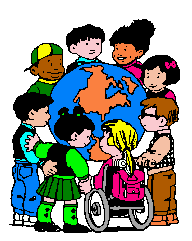 |
|
In this unit you will learn how to prevent, manage,
and peacefully resolve conflicts. You will identify a conflict, understand what is causing the conflict, and use
nonviolent problem-solving skills to de-escalate the conflict so that a mutually
acceptable agreement can be achieved. |
 |
|
What is a conflict?
Work as a group and explain in writing what a
conflict is.
Look for the noun conflict in the following links.
Give examples of
three conflicts that happened to you.
Find
out what a conflict is - click here
and here.
|
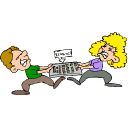 |
What is the best way to feel at the end
of a conflict?
Look at the following table: which is the best way
to feel at
the end of a
conflict?
|
|
A.  
Both people get what they want. |
B.  
Person 1 gets what he or she wants but person 2 doesn't. |
|
|
C.
 
Person 1 doesn't get what he or she
wants but person 2
does.
|
D.  
Neither person gets what he or she wants. |
|
Let's think about it...
Look at this picture and answer the following
questions:
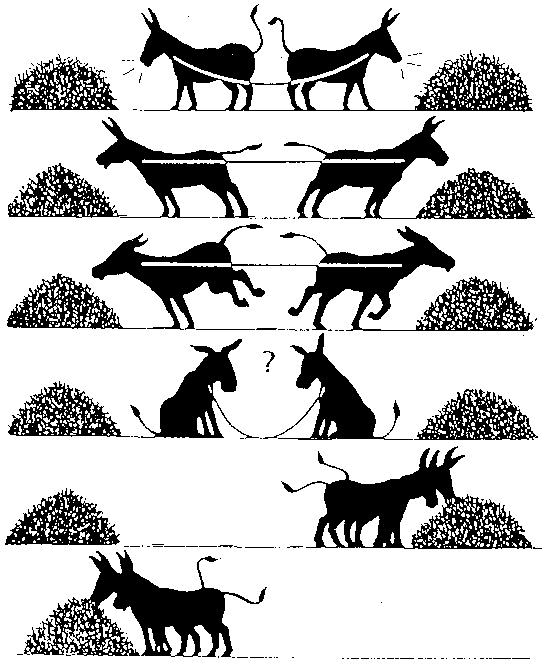
Is there a conflict?
What is the conflict?
How did the donkeys resolve the conflict?
What did you learn as a result of this conflict?
Send your answers to the

|
|
|
THE ORANGE
Two little sisters were arguing over an orange, "Give it to me,
I want
this orange, it's mine" shouted the first girl.
"And I want this
orange too, I need it right now," cried the
other girl.
The mother came in and listened to the requirement of each
of the
girls.
Both wanted the same thing. The mother took a knife and cut
the orange in
two halves. She gave each little girl one half.
The first girl peeled her half, threw away the skin, and
ate
the inside. The
second girl also peeled her half of the orange,
but threw away the inside, and
put the skin aside to dry.
She wanted to make some jam out of the orange.
What was the requirement of the first girl, and
what was
the requirement of
the second girl?
What was the interest of the first girl, and what was the interest
of
the second girl?
If the mother had listened to their interest instead to their
requirements,
could you imagine another resolution of this conflict?
Write down HOW!
What are your rights?

Let's remember what our rights and responsibilities
are so that
we respect each other more.
Write here what you think students' rights are:
Write here what you think students' responsibilities
are:
Check your answers:
Student
Bill Of Rights
More on Rights
Student Bill of Responsibilities |
 |
| |
|
Mini Projects
1. What should you do in a conflict?
What should you do if you have a conflict with a
friend?
Work in a small group and brainstorm ideas
how to
solve a conflict.
As a group write down your ideas here:
Click on the following links to learn more
about what
to do in a conflict.
Write guidelines for people in conflict -tell
them what
to do, and what not to do.
1.
Rules for
fighting fair 1 and
fighting fair 2.
2.
Time out to cool down
3.
Rules For
Getting Your Mads Out
4.
Things To
Do Later If The Mads Are Still There
5.
Things To
Do If Someone Bigger Starts To Hurt You
|
 |
2. Conduct a Survey
n this activity you will work alone and
conduct
a survey about people and conflicts and make
a fact sheet.
1. Survey ten people that are not in your
class.
The people can be friends from school, parents,
neighbors, etc.
2. Analyze the answers you got. Write a fact
sheet with your conclusions based on these answers.
Did you find anything that
is surprising?
Are there any similar answers?
Did people answer completely
differently?
3. Compare your survey and fact sheet with
your group.
Were their answers similar or different?
Write down your findings as
a group and add to your
fact sheet.
To conduct the survey
click here or
here (Word file).
|
 |
Documenting Conflicts
In this activity you will work alone and
document
three conflicts. Based on what you have learned so far,
you will
explain if the conflict was resolved satisfactorily
or badly.
After documenting your conflicts, share your
work with
your group. Each group member has to comment on
one of your
documented conflicts and suggest a better
way the conflict could have been
resolved.
Click here to
document conflicts.
|
 |
When I get angry...
Click here to find out
WHAT I
AM DOING AND WHY I AM DOING IT
What did you find out about yourself?
|
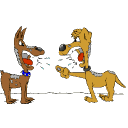 |
What makes you angry?
Look at your trigger words
(triggers are words that make you angry).
Click
here to find out what makes you angry.
Click here to
download the page in Word.
Learn how you can help control your
own temper:
Click
on the Peace-ing It Together
Poster
Preparing for Problem Solving
I Was
Called a Name
Taking a Look at My Conflict Behavior |
 |
1. Stop. Cool off.
2. Talk and listen to each
other.
3. Find out what you both
need.
4. Brainstorm solutions.
5. Choose the idea you
both like.
6. Make a plan. Go for it.
|
|
How can you help others or yourself?
What should you do if two of your friends are
fighting?
Click here to document conflicts. Have you ever
helped to resolve a conflict between two friends?
Tell us about it.
Write to the
 |
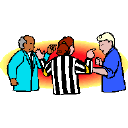 |
Conflict Role-Plays
Choose a role play and act it out
with a friend.
|
 |
|
Your friend takes the pencil you just
dropped on the floor. He or she starts
using it and you have no pencil now.
|
| The student behind you on line bumps into you and doesn’t say,
“Excuse me.” |
| Your mother yells at you because you haven’t cleaned your room
in a week. |
| Someone you know is sarcastic to you in front of the class. You
feel embarrassed. |
| The person you’re working with rips your paper by mistake.
|
| Your friend says he or she will return your book in the morning,
and he or she forgets it. You’re mad because you really need this book. |
| Someone you know doesn’t invite you to a party that he or she is
having, but invites all the other kids. |
| A kid makes fun of you in the lunchroom. You want to say
something to him or her about it without getting angry or defensive. |
Danny doesn't want to play football with Yossi. Yossi
comes on the playground and takes the
ball from the players.
Danny and the other players run after Yossi.
Yossi throws the ball to the other yard.
Danny starts calling Yossi names.
Danny and Yossi start to fight. |
| Brother and sister are watching
TV. He would like to watch the sports match
on one channel, while she wants to see the documentary film on another.
Children in pairs (in 2 concentric circles one opposite the other) play the role
of the brother (outside circle), or the role of the sister (inner circle). They
can decide about the resolving or non re-solving this conflict situation. Then
they switch the roles. |
|
S.O.S. Steps to Resolve a Conflict
| S
tory
|
Each
person tells his/her side of the story including using an
"I" message to say how each feels. |
| |
|
| O
ptions |
Both people suggest possible
solution options.
|
| |
|
|
S
olutions |
Both
agree on a solution.
Make sure the option agreed to
is safe, fair and will work
for both people. |
Click here to learn more about S.O.S. Steps |
 |
Some
Lessons
- Those who resolve conflicts attack the problem, not
the person.
- Accusing the person accelerates or widens the conflict and provokes self
defence.
-Attacking the problem leads to resolving the conflict.
-Conflict resolution is a process.
|
|
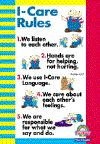


 |
|
| The Basic Elements of the Mediation
Process The elements of the basic mediation process are:
First
Step: Both sides agree
to solve the conflict.
Both sides take a cooling off period.
Second
Step: Ground Rules
1. Treat each other with respect; no blaming or put-downs.
2. Attack the problem, not the person.
3. Wait for your turn to speak; no interrupting.
4. Work together toward a fair solution.
5. Tell the truth.
Third
Step: Mediating with the
Win/Win Guidelines
1. Cool Off.
2. Each person states their feelings and the problem using “I
Messages.”
3. Each person states the problem as the other person sees it.
4. Each person says how they are responsible for the problem.
5. Brainstorm solutions together and agree on a solution that
satisfies both people.
6. Affirm, forgive or thank each other.
|
|
|
Talk it out together: How to solve conflicts |
|
Step 1: Get together
Step 2: Take turns talking and listening
Step3: What will help?
Step 4: Choose a plan
Step 5: Do it!
A. Define the
problem.
B. Brainstorm
solutions.
C. Choose a
solution and act on it.
|
To learn more Click on the following links:
6 Steps for Rebuilding Peace
-
-
-
-
-
-
|
|
Links
hrea.org
Teachervision-dealing with war
Dealing with your own anger
A conflict
resolution article for elementary classroom
teachervision.com
educationworld.com
6 steps for rebuilding
peace
Conflict Resolution and Peer Mediation Elementary Guide (PDF)
Let's
Resolve Conflicts Together - many suggested activities (PDF)
Ohio Commission On Dispute Resolution & Conflict Management
Teaching Tolerance
Trackstar
Trackstar2
Bullies
Bully-Busters
Safeyouth
http://www.csmp.org/handouts/tips.htm
Building Peaceable Schools
Conflict Resolution for Elementary Schools
Preventing Violence
One World Our World
http://www.gigglepotz.com/peace.htm
Conflict Management - State Ohio
An Example of how to guide children in conflict
Resolution
Project about
Conflict
Lesson plans
Fighting Fair |
Last updated
19/07/09
|
|
 |